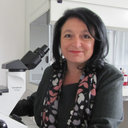In vitro antiviral activity of a series of wild berry fruit extracts against representatives of Picorna-, Orthomyxo- and Paramyxoviridae.
Ключови думи
Резюме
Wild berry species are known to exhibit a wide range of pharmacological activities. They have long been traditionally applied for their antiseptic, antimicrobial, cardioprotective and antioxidant properties. The aim of the present study is to reveal the potential for selective antiviral activity of total methanol extracts, as well as that of the anthocyanins and the non-anthocyanins from the following wild berries picked in Bulgaria: strawberry (Fragaria vesca L.) and raspberry (Rubus idaeus L.) of the Rosaceae plant family, and bilberry (Vaccinium myrtillis L.) and lingonberry (Vaccinium vitis-idaea L) of the Ericaceae. The antiviral effect has been tested against viruses that are important human pathogens and for which chemotherapy and/or chemoprophylaxis is indicated, namely poliovirus type 1 (PV-1) and coxsackievirus B1 (CV-B1) from the Picornaviridae virus family, human respiratory syncytial virus A2 (HRSV-A2) from the Paramyxoviridae and influenza virus A/H3N2 of Orthomyxoviridae. Wild berry fruits are freeze-dried and ground, then total methanol extracts are prepared. Further the extracts are fractioned by solid phase extraction and the non-anthocyanin and anthocyanin fractions are eluted. The in vitro antiviral effect is examined by the virus cytopathic effect (CPE) inhibition test. The results reveal that the total extracts of all tested berry fruits inhibit the replication of CV-B1 and influenza A virus. CV-B1 is inhibited to the highest degree by both bilberry and strawberry, as well as by lingonberry total extracts, and influenza A by bilberry and strawberry extracts. Anthocyanin fractions of all wild berries strongly inhibit the replication of influenza virus A/H3N2. Given the obtained results it is concluded that wild berry species are a valuable resource of antiviral substances and the present study should serve as a basis for further detailed research on the matter.





